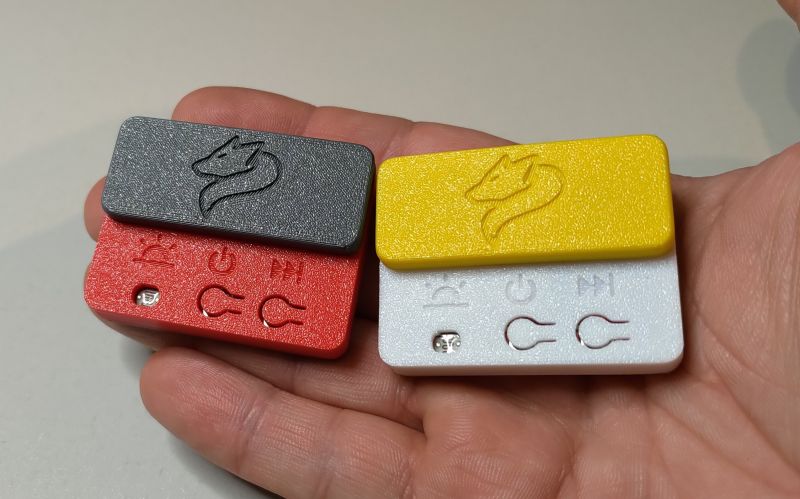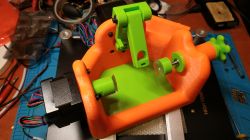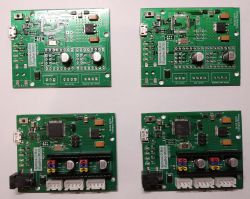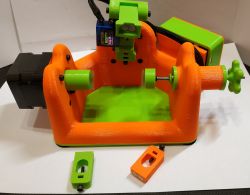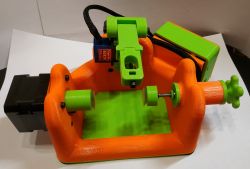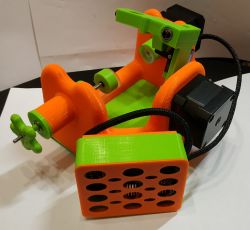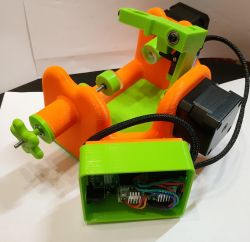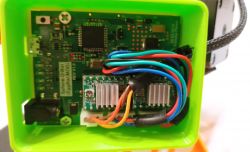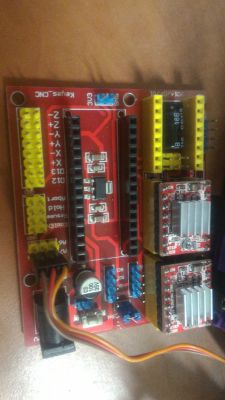Buddy, first a little bit of a nervousness

This is a discussion and I am not attacking you, but in discussions sometimes arguments are exchanged. Especially when we talk about the design of devices, we often argue why it was solved this and not otherwise.
Another thing, the second time you have not read the facts.
Eggbot did not do this to attach anyone to anything. The original one is made on a PIC microcontroller and all the source codes are available (I've given a link to them anyway).
In my opinion, this is what I wrote, they did not unnecessarily complicate the writing of the code.
So it is also not true that the eggbot is Arduino based. Eggbot clones, on the other hand, are based on Arduino and as you can see here we have different approaches, someone used a huge library with great possibilities (like the solution you made), and someone else, for example, the guys from jjrobots to create a Sphere-O-Bot clone used the original protocol and wrote a simple code that as you can see does the job.
To tell you the truth, when you tell someone about attachment you can talk about Apple companies, but not about constructions where you have everything shared and can do as you see in a million ways. Anyway, let's leave it to Apple because these are different states of consciousness and what this company does is sometimes difficult to comment in any reasonable way. ;)
Another thing CNC ... You called it CNC and ok

I called it a printer because it is an IMHO device more similar to what a large format printer or plotter does than to what, for example, a CNC lathe does

However, when I write about CNC, you give me a link to wikipedia and say that in this description on the Wiki you catch an egg painting toy, because I have a lot of resistance to classify it. Structurally, it is similar to a large-format printer and a lathe :)
Another thing, as I said, I am not attacking you - but I would love to hear why, for example, when designing such a device from scratch, i.e. creating electronics, firmware, etc., he used G Code, what would give an advantage - and the advantage is not sdandard because as I mentioned pulling the toy under the machine The CNC is highly questionable :)
You can find many toys with some mechanical solutions, sometimes very similar to those used in CNC machines, but that doesn't make them CNC machines.
My approach is simple, designing any device should meet certain assumptions. In this it is supposed to be a solution for drawing on eggs and other such types, eg baubles, etc. The design assumptions have been met because you will not deny the same effect in both cases. However, you are suggesting that this solution is not the best and say that the G Code supporting version has the advantage.
If this is the case, then you can easily answer me a simple question, what will I not draw on the egg if I do not have G-code support ... And please, no extremes, because we will soon come to the fact that in order to paint eggs we have to buy Autocada or Solidworks -and ;)
However, how do you want my opinion on why someone used GRBL, because unfortunately the world of arduino is bricks. Hardly anyone makes an effort to do something optimally(because hardly anyone using Arduino can program well, as can be seen from the poor quality of many libraries), and this library just proved to be effective and you didn't have to think much - it makes sense for me to use this library in such a project.
If you have a different opinion, justify it substantively, not with an attack or examples that Apple did something there ... because it is, to put it mildly, argumentative ...
For example, I gave you an example when it would make sense to use G Code ... so far you are writing about butter and no particulars ... why to do this, and not otherwise.
Although I'm not sorry ... one argument is that the toy is compatible with CNC machines ... Only I have doubts whether this compatibility is needed for anything and what benefits can be obtained from it.
Or let's say otherwise. You do a project in the company, as if you would argue to the boss by creating such a toy (you cannot use a ready library for some legal reasons, for example) that you need to implement G Code support in it, which will result in more work, and thus the cost of creating the project. .



